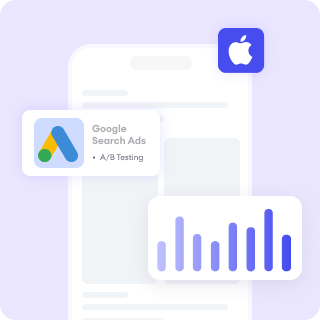In SEO, understanding the significance of header tags is crucial for anyone looking to enhance their website's visibility and ranking. Learning how to use these tags effectively, it will help you structure your content in a way that both search engines and users can easily navigate.
Header tags, commonly referred to as H1, H2, H3, and beyond, are HTML elements used to define headings and subheadings within a webpage. These tags create a hierarchy of information, helping search engines understand the structure of your content.
Let’s find out in detail what exactly header tags are, how they impact SEO, and best practices for using them effectively.
What are Header Tags?
Header tags are HTML elements that define different levels of headings on a webpage. They range from H1, the highest-level heading, to H6, the lowest-level heading. Here's a breakdown:
- H1: This is the most important heading tag and typically represents the main title of the page or post. It should succinctly summarize the topic of the content.
- H2: Subheadings that divide the content into sections. These are typically used for main subsections.
- H3 to H6: These are used for further subdivisions, breaking down the content into smaller, more specific sections.
Here’s an example:
html
<h1>Ultimate Guide to SEO</h1>
<h2>What are Header Tags?</h2>
<h3>Importance of Header Tags in SEO</h3>
<h4>How Search Engines Read Header Tags</h4>
This hierarchy provides clarity, both for users and search engines, helping them quickly determine what the content is about.
How Header Tags Affect SEO
1. Improved Content Structure
Header tags help organize content, making it easier for both search engines and users to understand. Google, for instance, values content that is structured logically and is easy to read.
Learn more: Beginner's Guide On How To Create Website Structure
2. Keyword Optimization
Including relevant keywords in header tags, particularly in the H1 and H2 tags, can give search engines a better understanding of your page’s topic. This can boost the page's relevance to specific search queries.
Learn more: How To Integrate Keywords Into Your Content
Learn more: How To Create Content Clusters For Your Business Website
3. User Experience (UX)
Well-organized content using header tags improves the user experience by guiding them through the text. This leads to longer time spent on the page and lower bounce rates, both of which are positive signals for SEO.
4. Search Engine Crawlers
Google and other search engines use crawlers to "read" your page. These crawlers place more emphasis on the text inside header tags, as they believe this text is indicative of the most important content. If your header tags are clear and relevant, search engines are more likely to rank your page higher.
Learn more: How Does Website Crawling Work and What It Means For Us?
Best Practices for Using Header Tags in SEO
- Use a Single H1 Tag:
Ideally, each page should have one H1 tag that clearly defines the main topic. Avoid using multiple H1 tags, as this can confuse search engines and disrupt the content hierarchy.
- Include Keywords Naturally
Incorporate relevant keywords into your header tags, but do so naturally. Overloading your header tags with keywords (also known as keyword stuffing) can hurt your SEO efforts.
- Use Header Tags to Break Up Content
Use H2 tags for main sections of your content, H3 for subsections, and so on. This creates a logical structure and makes your content more readable.
- Don’t Skip Levels
Don’t skip from an H1 to an H3 or from H2 to H4. Maintaining a proper order (H1, H2, H3, etc.) ensures that your content is logically structured for both users and search engines.
- Avoid Using Header Tags for Styling
Header tags should be used to structure your content, not just for making text larger or bold. Use CSS for styling purposes instead of misusing header tags for design.
Common Mistakes to Avoid
- Overusing H1 Header Tag: Absolutely do not use more than one H1 tag on a page. Use only one H1 tag per page to signal the main topic to search engines.
- Ignoring Header Tags Altogether: Using header tags in your content is a must. Skipping header tags in your content makes it harder for search engines to understand your page structure. Ensure you include them to improve content clarity.
- Keyword Stuffing: While it’s important to use keywords in your header tags, avoid stuffing them in an unnatural or forced way. This practice can negatively impact both readability and SEO.
- Not Updating Header Tags for New Content: As you update and add new content, remember to revise your header tags to match the new structure. Outdated header tags can hurt your SEO performance.
Conclusion
Header tags play a critical role in SEO by improving your site's structure, enhancing user experience, and providing clear signals to search engines. By using header tags thoughtfully, you'll help both users and search engines understand your content better, which can ultimately boost your site's ranking.
Improve your website performance with FoxAdvert!
If you are looking forward to improve your website performance, our professional team of SEO experts at FoxAdvert can help you. Contact us today to start your journey 😊











